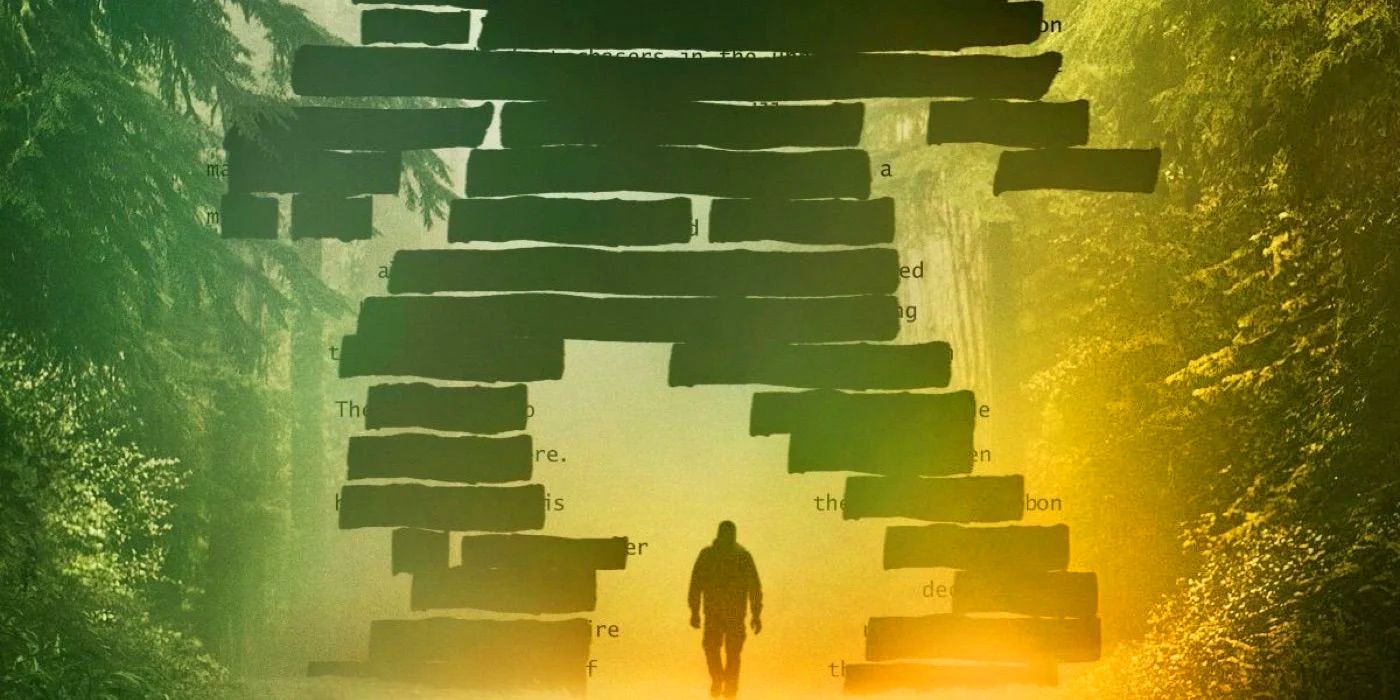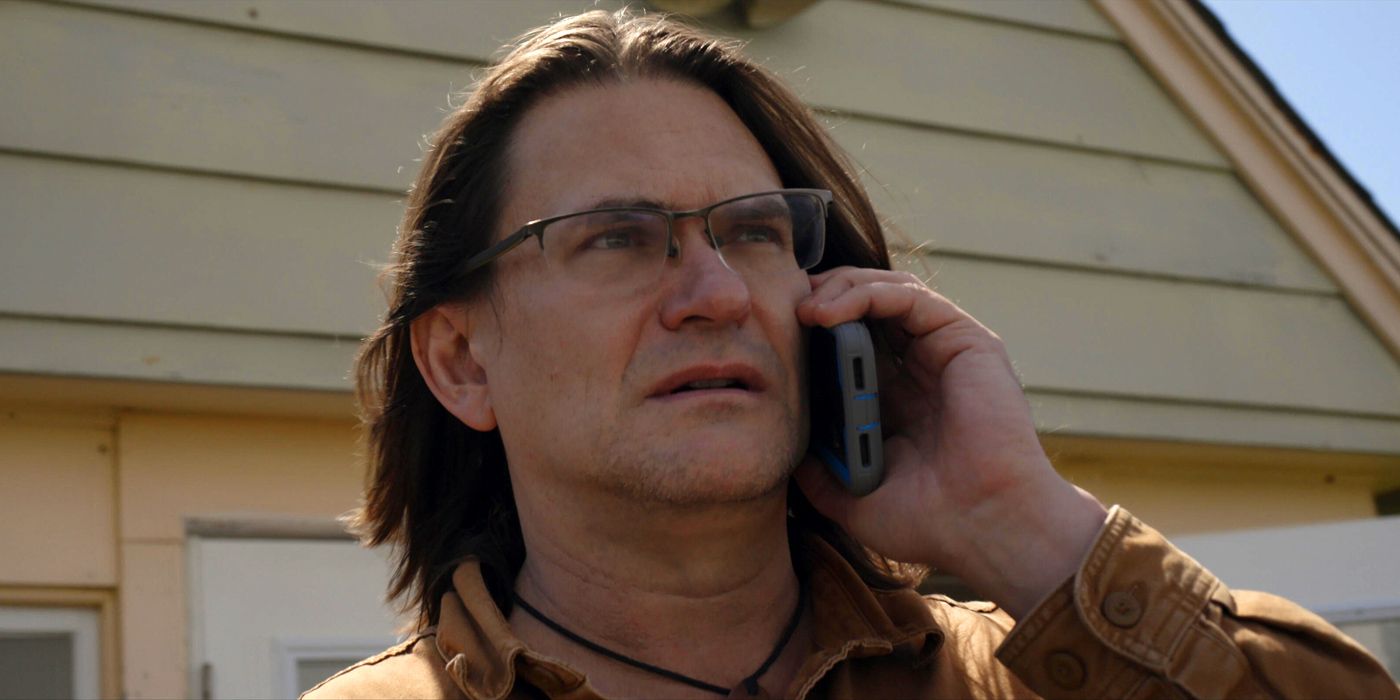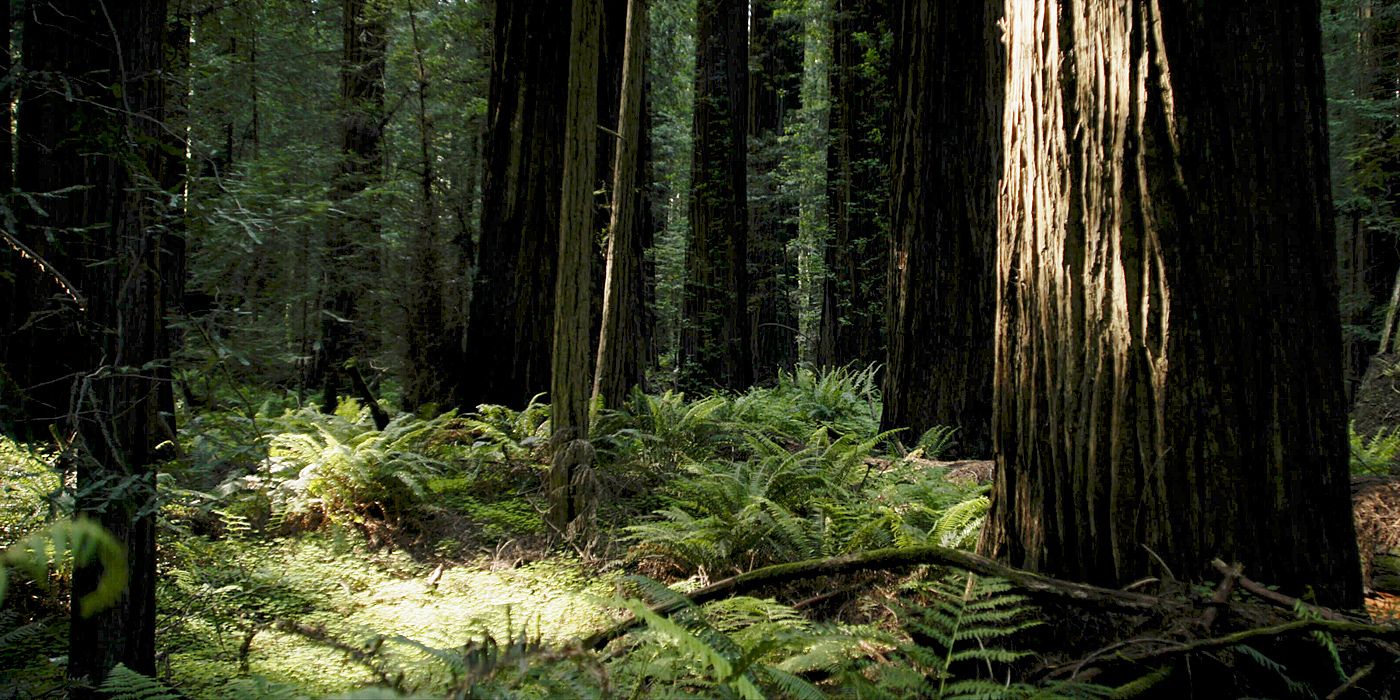Last year, locked-in Americans fell in love with the bizarre and often-violent intricacies of private big-cat zoos. Sasquatch, Hulu's terse new docuseries, might be the perfect last-minute snack before the country finally opens its doors again. With just three taut episodes, the true-crime drama keeps its story from dragging, a common pitfall for the genre. And its unusual cast of characters is uniquely compelling, and prone to an earthy honesty that makes it easy for viewers to figure out who's a key player and who's merely a helpful anecdote.
Sasquatch opens with a note of unease, the camera often close on journalist David Holthouse (Stalking the Bogeyman) as he tells a story that he's fully aware wouldn't be out of place on the lips of the weird guy at the end of the bar: In 1993, a much younger David was working on a cannabis farm in northern California when, one night, a man runs in to tell the farm's owner that Bigfoot has killed three men at another farm nearby.
The reenactment of the scene from 25 years ago is atypical, told with scratchy indie animation and a slim color palette that transforms the tale into something both absurdist and earnest. Nevertheless, the tale has haunted David all this time. Now an acclaimed journalist, he returns to Mendocino County to discover whether there's any truth behind the bizarre story he overheard.
The documentary smartly weaves together the legacy of Bigfoot, the complexities of marijuana growth and its legislative fights, and the bloody history of white settlers moving into indigenous territories. It's easy to make a cynical assumption about the Bigfoot hook, but David's story takes place in the heart of Sasquatch country. He's in the same forests in which the Patterson-Gimlin film was recorded 1967, igniting a decades-long debate about the legendary creature and the authenticity of the footage.
The shadow Bigfoot casts over David's pursuit never leaves for long, but the documentary isn't focused on the truth behind the cryptid. Although the camera visits a number of Bigfoot-obsessed locals, and allows them to speak for themselves, the question here isn't actually whether Bigfoot is read or, if so, whether it's murderous. It's about the same questions author Michelle McNamara asked herself in her true-crime book, I'll Be Gone in the Dark: Why does the hunt matter so much to some people?
David asks himself that question aloud in the finale. He and the audience are fortunate enough to get at least some answers about what really happened in those woods in fall 1993, making this a rare example of a crime documentary that sets up and then satisfies the bulk of its questions. But buried in those answers are a lot of heavy truths for viewers to take away with them -- truths about racial violence, and about police malignancy and the distrust it fosters. It's the stuff that lingers long after the lurid story of the Sasquatch murders is resolved, and the dark truths hidden among the trees of the Emerald Triangle hold up under amateur scrutiny.
As for the Sasquatch itself, well ... The best clues to the riddle of the musky, mysterious creature lurking in the deep woods are in the words of the local sage, a chilled-out but cagey old man who calls himself Ghostdance. In the most compelling segments, he's keenly aware of the inherent mysticism of the ancient woods, and the first person in the documentary to remind the audience that the real monsters usually turn out to be ourselves.
Sasquatch is directed by Joshua Rófe and executive produced by Rófe, Mel Eslyn and Mark and Jay Duplass, Steven Berger, Zach Cregger, and David Holthouse. Guided by David Holthouse, the documentary premieres April 20 on Hulu.



